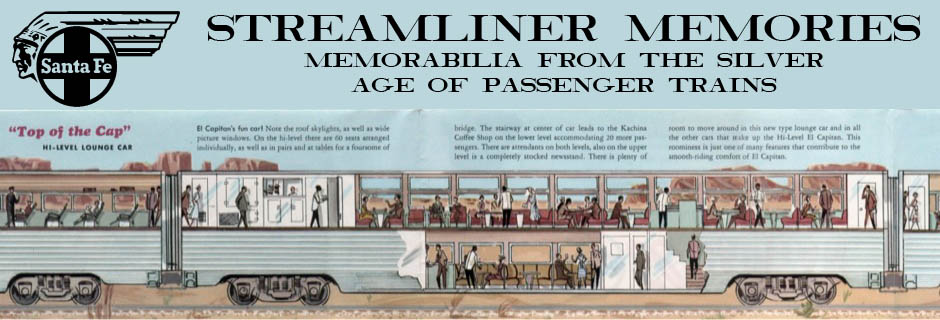This postcard wasn’t issued by the Union Pacific, but it shows the rail line and it is fun to trace the history of the card and the scene it shows. This particular postcard says that it shows Tunnel No. 3 in Weber Canyon, Utah.

Click image to download a PDF of this postcard.
The hand-colored postcard was based on the black-and-white photo, below, that was taken by the British-born photographer Charles Savage. Savage had documented construction of the Union Pacific and also took photos of the completion of the transcontinental railroad at Promontory Summit.

Click image for a somewhat larger view.
While Savage took photos as the railroad was under construction, this photo is taken sometime after that construction was complete, as the steel bridge in the above photo was a replacement for the wooden bridge in the photo below. This photo, possibly also taken by Savage, is apparently half of a stereoscopic pair. I can’t find the original pair on the web, though similar stereoscopic photos are in the New York Public Library.
Click image for a somewhat larger view.
The Google map below shows the orientation of the photo, the reverse S-curve in the river, and that the Union Pacific now has a double-track line necessitating a second bridge and second tunnel. The tunnel was needed solely to save the curvature required to follow the river. In fact, construction crews reached this point in January, 1869, but didn’t finish the tunnel until April; in the meantime, a temporary track for construction trains followed “dangerously . . . sharp curves at the edge of the turbulent river.”
Below is a contemporary photo of the scene by photographer Richard Koenig, who has posted more than 600 photos of the entire route of the original transcontinental railroad (the Weber tunnel photo is in this set). While Savage had to climb a rocky hillside to get his photo, Koenig was able to simply stand on the shoulder of Interstate 80. From Koenig’s photo, we can see that the tunnel on the left is the new one.


Actually, small correction, he would have been standing on the shoulder of I-84 which runs up Weber Canyon. I-80 is south and runs from Salt Lake City to Coalville (Parley’s Canyon). They meet in Echo which is a few miles south and east of Tunnel No 3 and become I-80 together, there. Hope that helps.
Mike